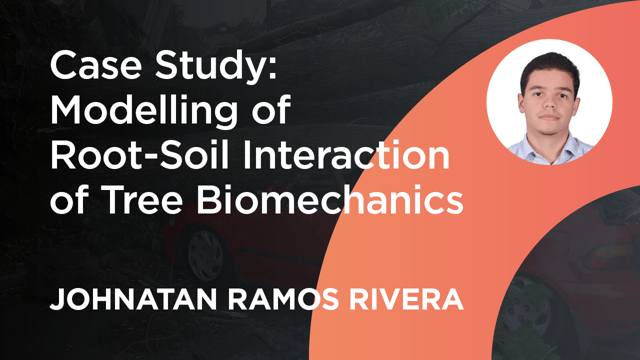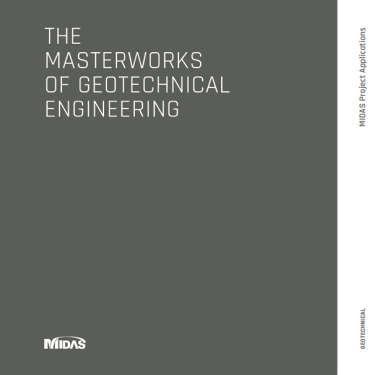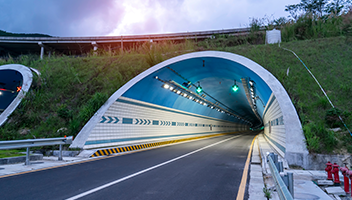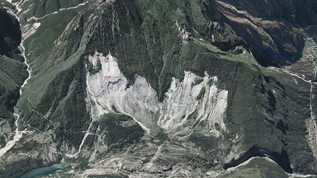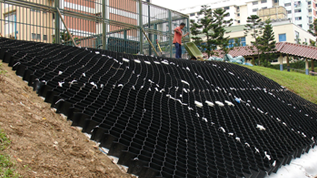🖱️ Jump to the contents
1. Introduction
2. Climate Change and Tree Failures antecedent3. Numerical Simulations
4. Implementation of midas GTS NX5. Summary and remarks
👇 Watch the popular case study webinar
Unsaturated Slope Stability Analysis using GTS NX
Introduction
Trees represent an important asset to the environment, economy and provide benefits on the impact of climate change on each country. However, they also can cause significant damage to infrastructure and pedestrians, especially in environments where trees are subjected to wind loads in urban areas due to rainfall. The main concerns for engineers and environmental professionals are related to the complexity to predict in detail the potential failure of a group of trees under changes in the environment and how soil properties contribute to this kind of phenomenon.
Climate change impact on tree stability is often associated with a higher risk of wind-throw due to higher frequency and magnitudes of the extremes of climate. Higher lateral loads due to an increase in maximum wind and rainfall reduce tree anchorage due to a decrease in soil matric suction and consequently the overall strength in trunk-root-soil.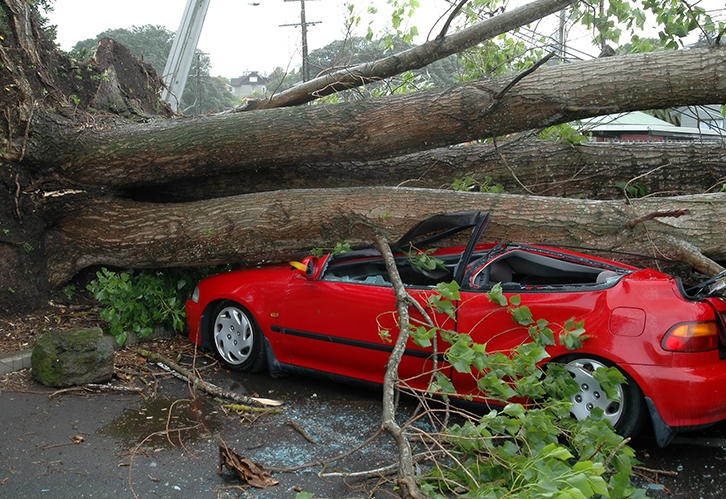
Numerical modelling of tree anchorage mechanism has progressed with advances in the mapping of the rooting architecture, but it is still limited in terms of the estimation of anchorage strength and safety factor against external loads. A lack of knowledge for quantifying factors of safety for biological structures remains due to the fact that (a) external loads are defined by environmental conditions that can vary widely, (b) overturning loads of otherwise mechanically equivalent structures can likewise vary as a result of growing and development of the tree, and (c) specific criteria for failure must be determined a priori.
The analytical equations proposed to evaluate the mechanical response of trees under lateral load (wind vector representation) do not capture the entire response of the tree and the influence of the self-weight on the bending resistance and the exponential increase of the anchorage strength of the root system due to the average diameter. Hence, there are still several gaps in knowledge that need to be addressed, particularly the dependency of the rooting anchorage system to water content, soil elasticity, and adhesion between roots and soil (i.e. roots sliding through the soil).
Under the concept of “healthy trees” as an indicator of no evidence of decay and knowing that the main causes of failure to these trees are referred to wind speed higher than 30 m/s (Kane, 2008), the root architecture, a number of main roots and diameter characteristics play an important role on tree stability (Dupuy et al., 2005; Gardiner et al., 2000; Ramos-Rivera et al., 2020). Considering that wind-induced tree failure is a risk for the safety of the urban population and their property, the estimation of tree stability and the evaluation of tree risk required a rigorous analysis with a high accuracy developed standard.
👇 Click here to see the Youtube video
Climate Change and Tree Failures Antecedent
1) Singapore environment

Figure 1_ Singapore Botanical Garden accident caused by tree failure
Figure 1 shows a failure that occurred in Singapore Botanical Garden on the 40 m tall Tembusu tree. According to Straits time news the 270-year-old tembusu tree had already been there when the Gardens was established in 1859, the accident took the life of a 38-year-old woman from India; signs of rot were not visible, said the expert during the review into Botanic Gardens tragedy after a tree fell.
2) Colombian environment

Figure 2 _Tree failure on Calazans neighborhood due to high rainfall intensity
on 11th March_2019 leave several damages to infrastructure
Tree failure cases in Colombia are more common that it appears to be for example the Figure 2 to Figure 4 present three recent cases in Colombia related to a rainfall-induced failure by uprooting. These cases show how important and frequent is the phenomenon. However, the lack of knowledge limits its identification, control, and design of remedial measurements.

Figure 3_ Tree collapse accident took the life of a civilian from Cucuta city
in Sardinata Roadway on 23rd April_2019

Figure 4_ Tree uprooting caused several damages to local housing
in Cartagena and two habitants got injured during the rainfall of 7th June_2019
The main conclusion at this point is the need to address the risk for tree failure under climate conditions and considering the unsaturated behavior of the soil.
Numerical Simulations
The static loading test or pulling test is one of the most used alternatives to evaluate in the field the overall behavior of tree/root systems. It consists of using a rope attached to the trees at different locations along the trunk to apply controlled static lateral loads to the trees. These lateral loads were measured using a load cell in line with the pulling rope.
An example of the static loading tests performing by winching a rope in steps of 0.05 m until a cumulative rope deformation is shown in Figure 5 a) the pictorial setup for the static loading tests. There was a pulley advantage of two (2) times for this test.
%20Setup%20for%20the%20static%20loading%20test.png?width=600&name=Figure%205%20(a)%20Setup%20for%20the%20static%20loading%20test.png)
%20capstan%20winch%20and%20winching%20point%20of%20test%20tree.(b).png?width=600&name=Figure%205%20b)%20capstan%20winch%20and%20winching%20point%20of%20test%20tree.(b).png)
Figure 5_Static pull test
Implementation of Midas GTS NX
An example of numerical analysis has been developed using MIDAS GTS NX to simulate the stresses and strains that occur at the perimeter of the trunk-root system. The model is based on the Finite Element Method, a common engineering approach used to study the behavior of large mechanical structures. According to (Zienkiewicz et al., 2013), the finite element analysis has a more realistic approach to represent the real geometry of the tree and internal wood properties. The finite element analyses have been used to simulate the static behavior of tree under wind loads instead of the empirical and analytical equations that involve many assumptions and sometimes increase the uncertainty of the derived results.
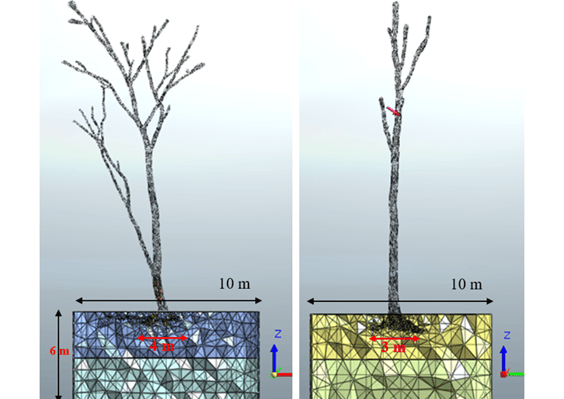
Figure 6_Numerical model domain and border conditions
The root system of the analyzed tree had more structural roots that provided the stability of the tree with an average diameter of 0.5 m for the main trunk and 0.2 m of average root diameter (dr) for the first-order root. Four massive roots radiating horizontally from the trunk were identified. The depth of the rooting system was about 1.2 m
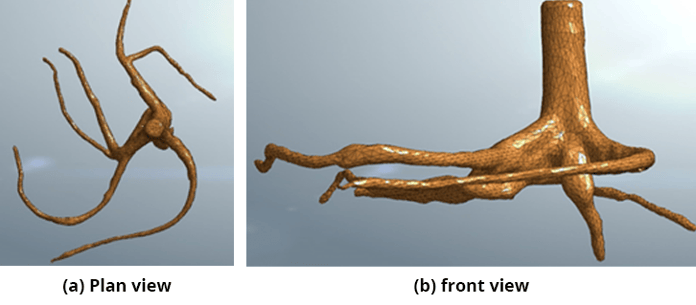
Figure 8_Root architecture S. saman
In this model, the developments were focused on root-soil interaction, the mechanical behavior of root material, and the characteristics of the soil. Due to the complexity of meshing root architecture with 3-D solid elements, the roots were considered as an embedded beam.
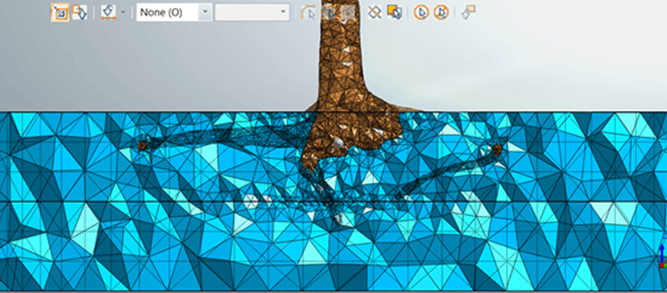
Figure 9_Bonded contact interface in S. Saman tree
Some basic results in terms of stresses in MIDAS GTS NX can be displayed in Figure 9, It can be used to estimate the main concentrations of stress on the rooting system that can trigger any potential failure mechanism and the most important analysis is the effect of external loading in the soil/root interaction performance with the real/root architecture.
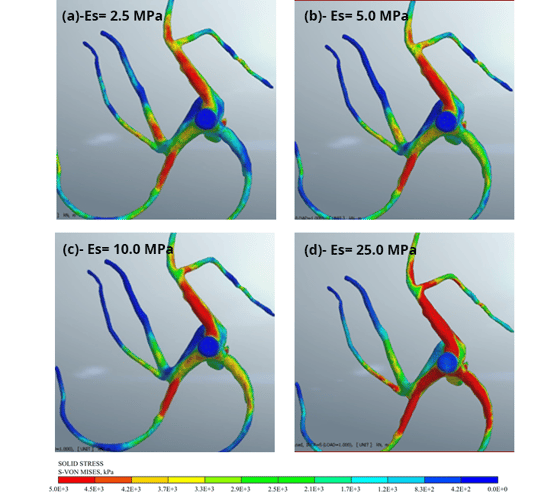
Figure 10_Overall stresses of the S. saman tree varying elastic modulus of the soil
Summary and remarks
This basic model of tree anchorage was capable of simulating a real/rooting assessment for the first time. It also allowed the localization of damage within the root system and includes specific parameterization for root and soil properties based on measurements and experimental evidence reported in the literature. The results are promising enough to envisage further applications to adult trees. However, some further validations and rooting data acquisition are required.

